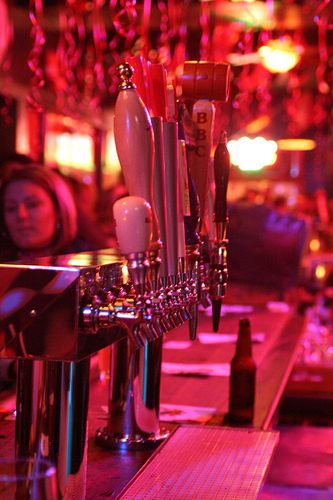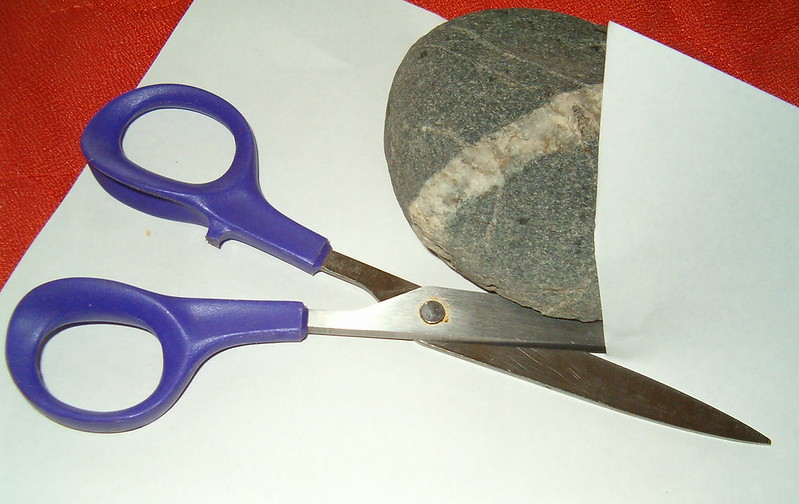
Bree Bailey via Creative Commons, CC BY-SA
The vaunted “third space” isn’t home, and isn’t work—it’s more like the living room of society at large. It’s a place where you are neither family nor co-worker, and yet where the values, interests, gossip, complaints and inspirations of these two other spheres intersect. It’s a place at least one step removed from the structures of work and home, more random, and yet familiar enough to breed a sense of identity and connection. It’s a place of both possibility and comfort, where the unexpected and the mundane transcend and mingle.
And nine times out of ten, it’s a bar.
So, a little story: Once upon a time there was a scruffy real estate developer who shall go nameless, who made some prudent purchases in a derelict former industrial neighborhood. He had a dream to turn that neighborhood into a vibrant new community that attracted talented young professionals willing to pay at least $1,000 per square foot to live there. But times were hard and everyone thought he was nuts. Now, the developer had three things going for him: time, empty space, and a son who was actively dating. The son would come home from a date and say, “Pops, you know that empty storefront down the side street by the pier? Can my girlfriend turn that into a welding shop?” And poof! A rent-free welding shop would appear. Soon the area was populated with ex-girlfriends running quirky artisanal industries, but still times were tough and the talented young professionals would not come.
Then one day the son came home and said, “Hey Pops, my girlfriend wants to open a bar.” The father considered this gravely, but finally agreed. Bars were stinky and noisy and they sold liquor. But they also attracted people and besides the place was just sitting empty now anyway. The bar was opened, and lo and behold it became a Third Space: a place where poor young hipsters could go and hang their weary heads over cheap beer after a long day of yarn bombing, and also where the local shipping company guys enjoyed the jukebox. Before you knew it, alcohol was flowing freely, and the new locals and old locals were conspiring to illegally convert lofts into residential units and open food co-ops. It wasn’t long before the bar started serving food, and then one day the unthinkable happened – it opened a café next door with really good coffee and quirky flavors of scones….
Look, I’m not telling this story to glorify bars as the ultimate third space intervention – I’m just trying to point out that bars occupy a particular niche in the place-making ecosystem. They are like the prairie grass after the fire: preparing the way for the scrub, and ending with the deciduous trees and their variegated canopy. They are hardy pioneers, taking root where not much else can sustain life.
Wait, was that metaphor too much? Yes, definitely.
But it’s also the point: we shouldn’t romanticize third spaces as only being about brightly lit cafes, pedestrianized streets, and the local public library. Bars work in their scruffy way by offering a place to get away from an overcrowded apartment or a squalid loft or a grimy job. They are a place where someone with little to spare can go for a change of pace, and in many edgy neighborhoods those folks are overwhelmingly low-income, and many are also young. These are the bright young things who do the hard work of place-making, but they aren’t necessarily looking for “vibrancy.” It’s more likely they want cheap beer, a decent burger, and a friendly face.
The goal of a bar patron is to enjoy the primary benefit of any decent third space: a place to linger. I’m still looking for someone to generate a “lingering index” so that we can measure the impact of just plain old hanging out – but that’s really at the heart of place-making, and we shouldn’t forget it.
Place-making is thirsty work, so bottom’s up in praise of bars and the Third Space promise they hold.
See Kaid Benfield’s response, Does a Sustainable Community Need a Good Drinking Establishment?
Photo: Bree Bailey via Creative Commons, CC BY-SA






Comments